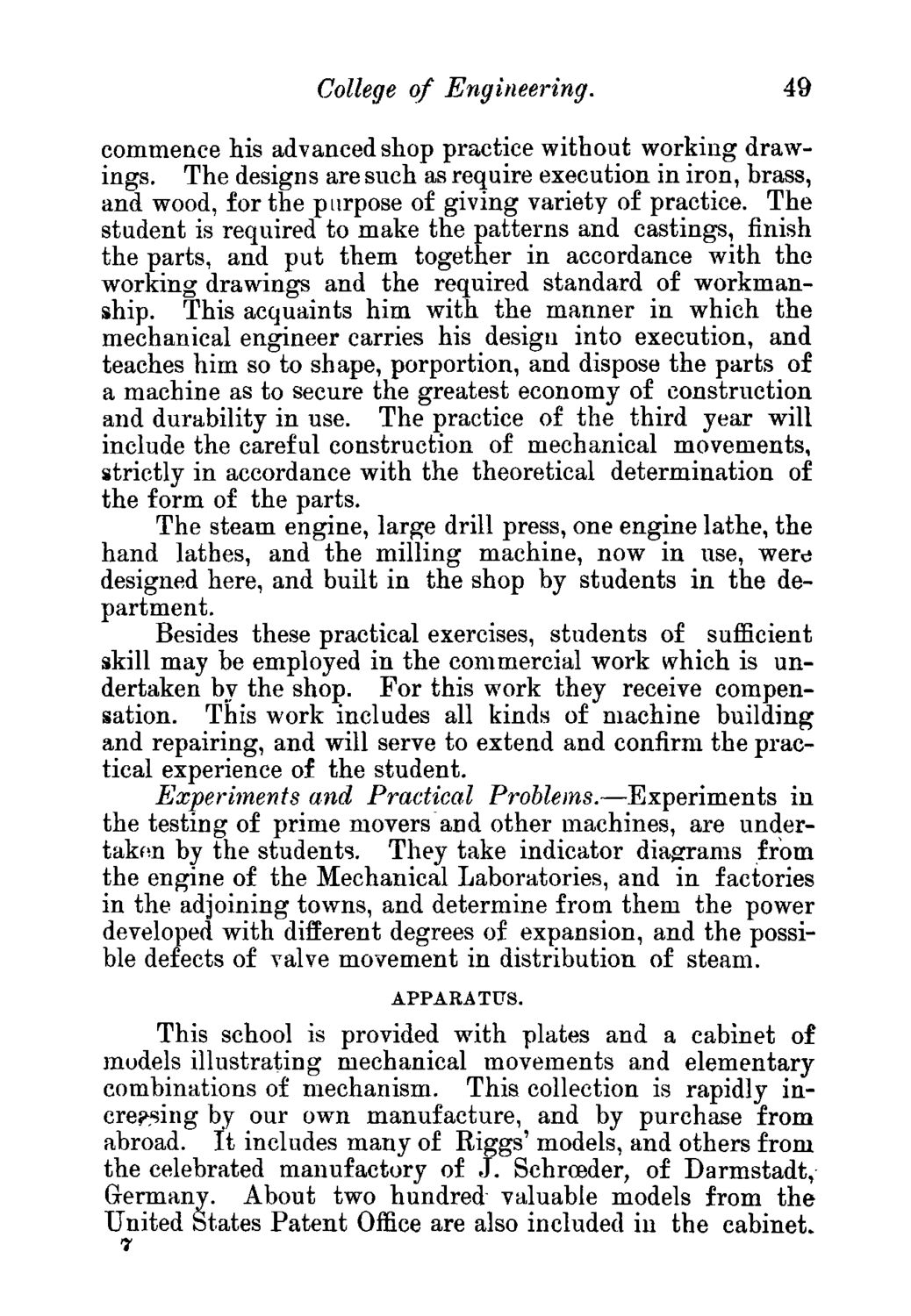| |
| |
Caption: Course Catalog - 1886-1887
This is a reduced-resolution page image for fast online browsing.

EXTRACTED TEXT FROM PAGE:
College of Engineering. 49 commence his advanced shop practice without working drawings. The designs are such as require execution in iron, brass, and wood, for the purpose of giving variety of practice. The student is required to make the patterns and castings, finish the parts, and put them together in accordance with the working drawings and the required standard of workmanship. This acquaints him with the manner in which the mechanical engineer carries his design into execution, and teaches him so to shape, porportion, and dispose the parts of a machine as to secure the greatest economy of construction and durability in use. The practice of the third year will include the careful construction of mechanical movements, strictly in accordance with the theoretical determination of the form of the parts. The steam engine, large drill press, one engine lathe, the hand lathes, and the milling machine, now in use, were designed here, and built in the shop by students in the department. Besides these practical exercises, students of sufficient skill may be employed in the commercial work which is undertaken by the shop. For this work they receive compensation. This work includes all kinds of machine building and repairing, and will serve to extend and confirm the practical experience of the student. Experiments and Practical Problems.—Experiments in the testing of prime movers and other machines, are undertaken by the students. They take indicator diagrams from the engine of the Mechanical Laboratories, and in factories in the adjoining towns, and determine from them the power developed with different degrees of expansion, and the possible defects of valve movement in distribution of steam. APPARATUS. This school is provided with plates and a cabinet of models illustrating mechanical movements and elementary combinations of mechanism. This collection is rapidly increp^ing by our own manufacture, and by purchase from abroad. It includes many of Riggs' models, and others from the celebrated manufactory of J. Schroeder, of Darmstadt, Germany. About two hundred valuable models from the United States Patent Office are also included in the cabinet. 7
| |